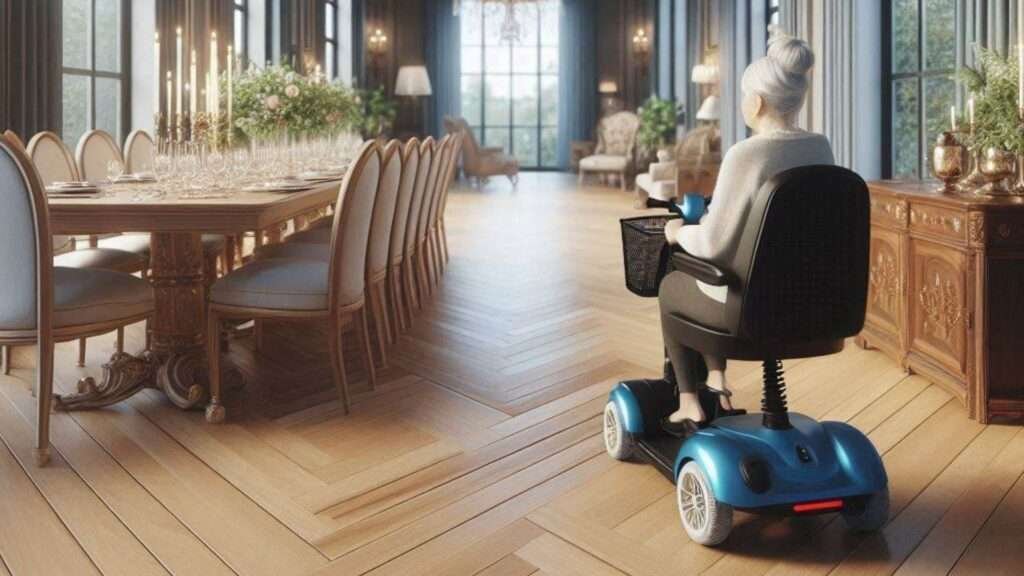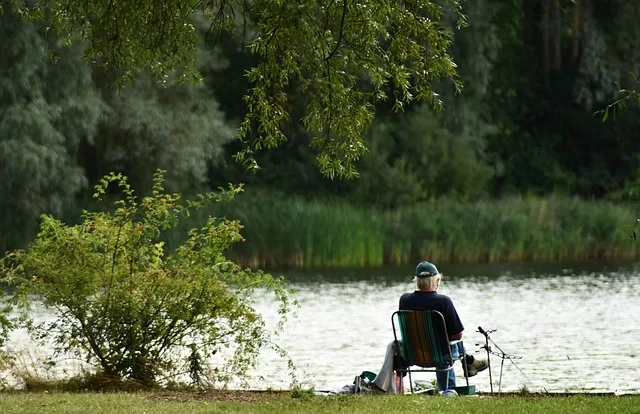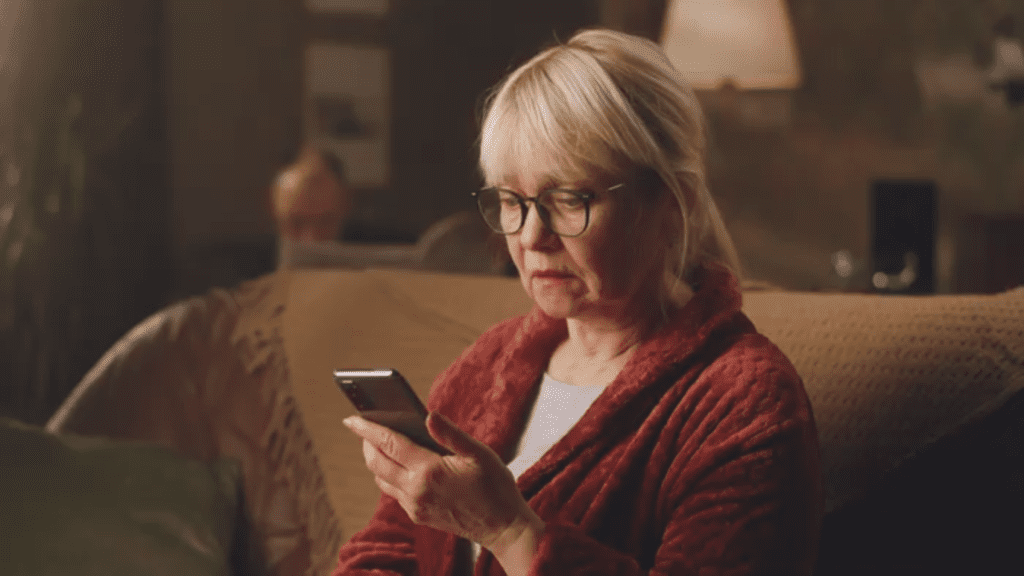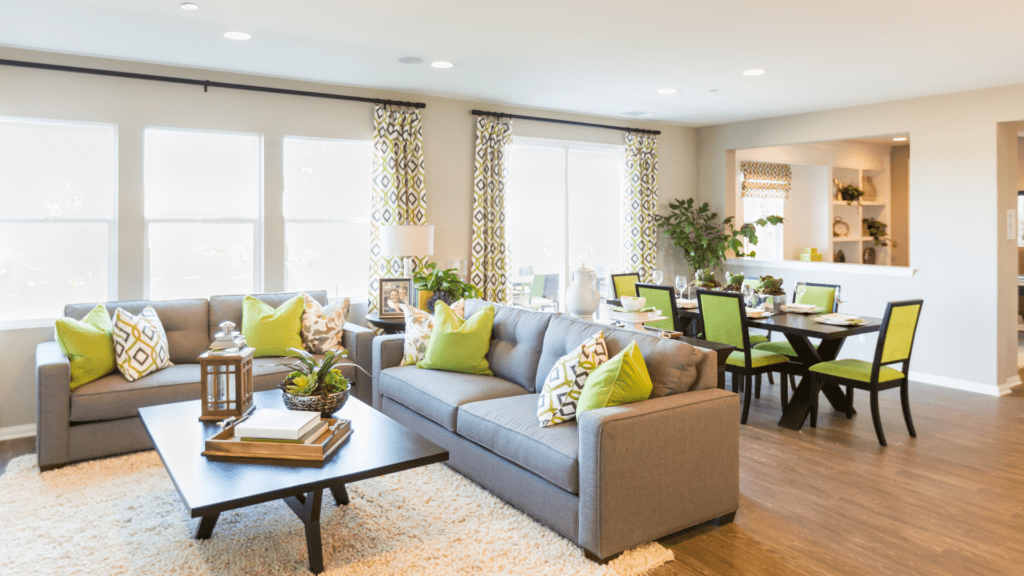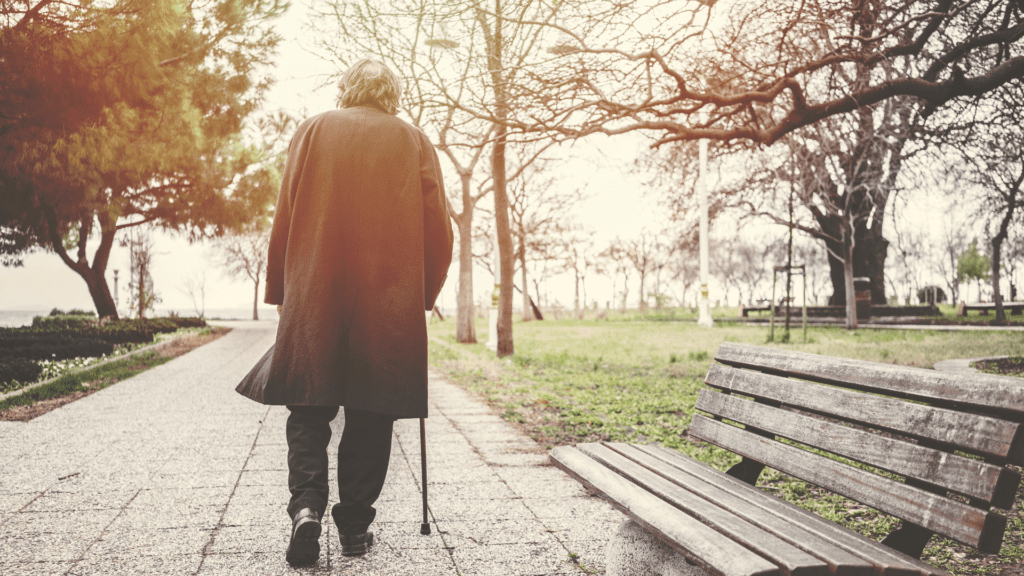Creating A Safe And Comfortable Home For Retirees.
Ensuring the safety and comfort of a home for
retirees is a critical concern as individuals transition into their golden
years.
With this comprehensive article I will be providing
a detailed framework for creating a living environment that caters to the
unique needs of aging adults, enabling them to thrive and maintain their
independence.
The article begins by emphasizing the importance
of regularly assessing a home’s safety features.
It delves into the identification and mitigation
of common hazards, such as tripping hazards, electrical safety risks, and
inadequate lighting.
This article underscores the value of professional
home safety evaluations, which can pinpoint less obvious dangers and offer
tailored solutions.
Addressing specific safety risks in senior living
spaces is a key focus of this article and it explores the challenges posed by
slippery floors, lack of handrail support, and obstructed walkways, providing
practical strategies to enhance the overall safety and accessibility of the
home.
It will also highlight the significance of motion-activated
outdoor lighting and emergency alert systems in creating a secure living
environment.
Ensuring mobility and accessibility within the
home is another crucial aspect covered in this article and it explores
comprehensive solutions for widening doorways to accommodate wheelchair users,
as well as alternative methods, such as installing offset hinges.
Additionally, this article delves into the
importance of organizing living spaces to promote senior mobility, with a focus
on ergonomic furniture selection, multipurpose room design, and strategic
storage solutions.
It further addresses the specific needs of
retirees in the kitchen and bedroom environments and provides insights on
designing senior-friendly kitchens, including the incorporation of
adjustable-height countertops, pull-out shelves, and ergonomic tools.
This article also emphasizes the importance of
selecting the right mattress and pillows to promote restful sleep and alleviate
age-related aches and pains. By addressing these key areas, this article
empowers retirees, their families, and caregivers to create a living
environment that fosters safety, comfort, and independence during the golden
years.
The strategies and solutions presented serve as a
valuable resource for transforming a house into a true sanctuary for aging
adults.
Table
Of Contents:
1.0 Introduction.
2.0 Assessing Your Home’s Safety.
3.0 Safety Risks in Senior Living Spaces.
4.0 Widening Doorways for Wheelchair Accessibility.
5.0 High-Security Locks for Senior Residences.
6.0 Motion-Activated Outdoor Lighting and
Emergency Alert Systems.
7.0 Organizing Living Spaces for Senior Mobility.
8.0 Designing Senior-Friendly Kitchens.
9.0 Bedroom Layouts for Aging Adults.
10.0 Conclusion.
1.0
Introduction:
As we transition into their retirement years, the
need for a safe and comfortable living environment becomes increasingly
paramount.
Our golden years should be a time of relaxation,
independence, and fulfilment, free from the constant worry of potential hazards
within the home.
This comprehensive article aims to equip retirees,
their families, and caregivers with the knowledge and strategies necessary to
create a secure and accommodating living space that caters to the unique needs
of aging adults.
Aging brings about a myriad of physical and
cognitive changes, which can introduce new challenges and safety risks within
the home environment.
From navigating slippery floors to ensuring
adequate lighting and accessibility, a thoughtful and proactive approach is
essential in establishing a living space that empowers retirees to thrive.
This article delves into the key considerations,
practical solutions, and expert insights required to transform a house into a
truly safe and comfortable sanctuary for the elderly.
By addressing common hazards, implementing
strategic modifications, and incorporating the latest technological
advancements, readers will gain a thorough understanding of how to optimise
their homes for the unique needs of retirees.
From assessing home safety to designing
senior-friendly kitchens and bedrooms, this article provides a roadmap for
creating a living space that promotes independence, reduces the risk of
accidents, and fosters a sense of security and well-being.
Hopefully this article will serve as a valuable
resource for retirees, their families, and caregivers, empowering them to
create a living environment that not only meets the physical and cognitive
needs of aging adults but also nurtures their overall quality of life during
their golden years.
2.0
Assessing Your Home’s Safety
Ensuring the safety and comfort of a home for
retirees is of paramount importance, as evolving needs can often introduce new
potential hazards.
Regularly assessing the home’s safety features is
crucial in maintaining a secure environment for elderly residents who may have
increased vulnerability due to age-related physical and cognitive changes.
A comprehensive home safety assessment not only
helps in identifying existing risks but also facilitates timely updates to
prevent accidents.
One of the most common hazards in homes occupied
by retirees is tripping hazards. These can include loose rugs, cluttered
walkways, uneven flooring, and poor lighting.
By identifying and mitigating these obstacles,
such as by securing rugs with non-slip pads, installing even floor transitions,
and ensuring adequate lighting, the risk of falls can be significantly reduced.
Electrical safety is another crucial
consideration. Retirees often rely on various electronic devices, which can
lead to tangled cords and overloaded outlets. Regularly inspecting electrical
components and ensuring they are in good condition is vital.
Consider using power strips with built-in circuit
breakers, and make sure that all outlets are grounded and accessible.
Moreover, periodic checks of lighting throughout
the home are necessary, as inadequate lighting can contribute to falls and
impede visibility, particularly in high-traffic areas like hallways and stairs.
Installing brighter bulbs or motion-sensor lights can enhance visibility and
safety.
While personal assessments are valuable,
professional home safety evaluations offer a comprehensive approach.
Experts in home safety for older adults can
pinpoint less obvious dangers and provide tailored solutions.
Such evaluations are particularly beneficial for
individuals around the age of 70 and above, as professional evaluators bring an
experienced eye to identify risks and recommend modifications that family
members might overlook.
Additionally, it’s essential to consider the
specific needs and limitations of the retiree when assessing home safety.
Factors such as mobility, dexterity, and cognitive
function should be taken into account to ensure that the home environment is
adapted to their individual requirements.
This may involve installing grab bars in the
bathroom, rearranging furniture to create wider pathways, or implementing
voice-controlled smart home features for those with limited mobility.
A regular and thorough home safety assessment,
coupled with a deep understanding of the retiree’s needs, is essential in
creating a safe and comfortable living environment.
By addressing common hazards and considering
professional evaluations, one can significantly enhance the safety and
well-being of elderly residents, allowing them to age in place with confidence
and independence.
3.0
Safety Risks in Senior Living Spaces.
As retirees settle into their golden years,
ensuring a safe and comfortable living environment becomes paramount.
Common safety risks in senior living spaces often
stem from everyday elements that may not pose threats to younger individuals
but can significantly impact the elderly.
One of the primary concerns is slippery floors,
which can lead to serious falls and injuries.
Maintaining clean, dry floors and strategically
placing non-slip rugs can significantly reduce these hazards. Similarly, secure carpeting and flooring
materials can provide much-needed traction.
Another common issue is inadequate handrails,
particularly in areas such as stairways and bathrooms, where stability is
crucial.
Installing sturdy handrails and grab bars in
strategic locations can considerably enhance safety and independence.
For example, bathrooms can benefit from grab bars
near the toilet and in the shower or bathtub, providing extra support where
it’s most needed.
Additionally, using non-slip mats in the shower
area can further reduce the risk of falls. Obstructed walkways create
unnecessary hazards as well. Ensuring clear, well-illuminated pathways
throughout the home is essential.
Furniture should be arranged to allow easy
movement, and any potential obstacles, such as electrical cords or clutter,
should be promptly removed. Regularly checking and replacing any faulty
lighting can also prevent accidents caused by poor visibility.
Adequate lighting itself plays a crucial role in
preventing accidents. Motion-sensor lights can be particularly useful for
seniors, providing illumination when needed without the requirement of manual
switches.
Hallways, entrances, and outdoor steps especially
benefit from such adaptive lighting systems.
Keeping living spaces safe for retirees involves a
comprehensive approach that identifies and mitigates risks.
By focusing on reducing slippery surfaces,
enhancing handrail support, and maintaining clear, well-lit walkways, the
likelihood of accidents can be minimized.
These measures not only promote physical safety
but also contribute significantly to the overall comfort and peace of mind for
senior residents.
4.0
Widening Doorways for Wheelchair Accessibility.
Creating a home environment that accommodates the
needs of retirees who use wheelchairs requires thoughtful modifications to
enhance mobility and accessibility.
One fundamental adjustment is widening doorways to
ensure unrestricted passage. Wider doorways are essential for wheelchair users,
as standard door sizes can present significant barriers to movement within the
home.
This section explores both comprehensive and
alternative solutions for achieving wheelchair-friendly doorways.
The standard doorway width in many homes is around
32 inches, which often needs to be increased to at least 36 inches to
comfortably fit a wheelchair.
Widening doorways involves several structural
changes, including removing the existing door frame, cutting into the wall, and
installing a broader frame and door.
Professionals such as carpenters or contractors
should conduct these renovations to ensure stability and compliance with
building codes.
The cost can vary significantly depending on
factors like wall type (load-bearing or non-load-bearing) and the need for
electrical or plumbing adjustments, typically ranging from $300 to $1000 per
doorway.
For those seeking less invasive methods,
installing offset hinges can be an effective alternative.
Offset, or swing-clear, hinges allow the door to swing
entirely out of the doorway, marginally increasing the passage width without
extensive construction work.
These hinges can add up to two inches of clearance
and are relatively affordable, costing between $20 and $40.
While they may not provide as much width as full
restructuring, they offer a practical interim solution, particularly in homes
where broader modifications are not feasible.
When considering doorway widening, it’s essential
to assess the specific needs and mobility requirements of the retiree.
Factors such as the size of the wheelchair, the
frequency of use, and the overall layout of the home should all be taken into
account.
A professional consultation with an occupational
therapist or accessibility expert can help determine the most suitable
solution, ensuring that the final design meets the individual’s needs while
adhering to relevant building codes and regulations.
Overall, ensuring doorways are
wheelchair-accessible is a critical step in creating a comfortable and safe
living space for retirees.
Whether opting for extensive structural changes or
simpler solutions like offset hinges, addressing this aspect of home design
promotes greater independence and ease of movement for wheelchair users,
significantly enhancing their quality of life.
5.0
High Security Locks For Senior Residences.
High-security locks play a crucial role in
enhancing the safety of senior residences.
As our aging population becomes increasingly
susceptible to security threats, it is imperative to invest in reliable and
robust locking systems.
Various types of high-security locks are
available, each with distinct features designed to provide unparalleled
protection and peace of mind.
Deadbolts are among the most common and effective
high-security locks. Typically, they offer a strong layer of security when
combined with standard locksets. Single-cylinder deadbolts, operable from the
outside with a key and a thumb turn on the interior, are straightforward yet
efficient.
Double-cylinder deadbolts, requiring a key from
both sides, provide an added security level but may restrict quick egress
during emergencies.
However, smart deadbolts have gained popularity
due to their ability to be controlled remotely via smartphones or smart home
systems, offering both convenience and security.
Another innovative option is electronic locks,
which have increasingly adapted to the security needs of senior residences.
These locks often integrate keypad systems or
biometric features, such as fingerprint recognition, ensuring only authorized
individuals can access the home. Electronic locks typically come with audit
trail capabilities, enabling caregivers or family members to monitor entry and
exit times.
Additionally, some models offer voice command
functionalities, crucial for seniors who might have mobility issues.
When selecting the best lock system for senior
residences, it is essential to consider factors such as ease of use,
durability, and the specific security needs of the resident.
A consultation with a professional locksmith can
provide valuable insights into the most suitable options. Furthermore,
installation should prioritise accessibility for seniors, avoiding
unnecessarily complicated mechanisms while ensuring effective protection.
Investing in high-security locks is a pivotal step
toward creating a safe and comfortable home environment for retirees.
By understanding the various types available and
considering individual safety and convenience needs, one can significantly
enhance the overall security of senior residences, ultimately providing peace
of mind for both residents and their families.
6.0
Motion-Activated Outdoor Lighting and Emergency Alert Systems.
Ensuring a safe and comfortable home environment
for retirees often begins with enhancing both outdoor and indoor security
measures. One of the essential features for outdoor safety is motion-activated
lighting.
These lights are strategically installed around
the home’s exterior to illuminate any movement detected within their range.
This not only deters potential intruders by
creating a sense of exposure but also significantly improves night time
visibility for residents.
With motion-activated lighting, retirees can
navigate outdoor spaces more safely, thereby reducing the risk of falls and
other accidents.
Moreover, advances in technology have made these
lights more energy-efficient and customisable. Some models allow users to
adjust the sensitivity and range of the motion sensors, ensuring optimal
performance tailored to specific needs. Integration with smart home systems
further enhances their effectiveness, allowing homeowners to control and
monitor lighting remotely through mobile applications.
As a safety feature, motion-activated lighting
stands out for its dual functionality: it helps prevent intrusions and ensures
safer movement around the premises after dark.
Moving indoors, it is equally crucial to establish
robust emergency alert systems. These systems offer a direct line to emergency
services, ensuring quick responses in urgent situations such as falls, sudden
illnesses, or other crises.
Emergency alert systems come in various forms,
including wearable devices, fixed intercoms, and more advanced smart home
integrations that can detect anomalies within the home environment.
Many offer features like automatic fall detection,
which can trigger an alert without the need for manual input from the user.
The installation process for emergency alert
systems is typically straightforward, often involving professional setup to
ensure all components function correctly and are placed in optimal locations.
Some systems also offer user-friendly interfaces,
making it easy for retirees to operate them independently.
By investing in reliable emergency alert systems,
retirees and their families gain invaluable peace of mind, knowing that
assistance is just a button press away, should an emergency arise.
The combination of outdoor motion-activated
lighting and comprehensive emergency alert systems creates a safer, more secure
living environment, allowing retirees to enjoy their homes with greater
confidence and comfort.
7.0
Organizing Living Spaces for Senior Mobility.
Creating a comfortable and safe home environment
is paramount for retirees seeking to enhance their quality of life.
Effective organization of living spaces plays a
crucial role, especially when mobility may be a concern.
By thoughtfully arranging and choosing the right
furniture, one can construct a living space that not only promotes safety but
also ensures ease of movement.
When selecting furniture, ergonomics should be a
primary consideration. Ergonomic furniture is designed to support physical
health and improve functionality, reducing the strain on joints and muscles.
Opt for chairs and beds with adequate support and
the correct height to prevent falls and facilitate easy sitting and standing.
Furniture with rounded edges may further reduce the risk of injuries.
Multi-purpose rooms can be exceptionally
beneficial for retirees looking to downsize. These flexible spaces can adapt to
various needs, whether it’s a guest room doubling as a home office, or a dining
area that also serves as a hobby space.
Strategically utilizing multipurpose rooms allows
for more efficient use of space while minimizing excessive movement throughout
the home.
Accessible storage solutions are equally
essential. Items frequently used should be stored at waist level to avoid
unnecessary bending or stretching.
Installing pull-out shelves and lazy Susans can
make it easier to retrieve items without overextending. Ensure that storage
areas are well-organized and within easy reach to reduce the risk of accidents.
De-cluttering is another vital strategy in
organizing living spaces. Excess clutter can be a tripping hazard and make
navigation difficult.
Encourage regular de-cluttering, keeping pathways
clear and furniture arranged to facilitate smooth movement. Avoid bulky
furniture in high-traffic areas, and ensure that walking paths are well-lit and
unobstructed.
Arranging furniture to create open and spacious
pathways can greatly enhance mobility.
Consider creating wide, straight paths for easier
navigation, particularly for those using mobility aids like walkers or
wheelchairs.
Position furniture in a manner that allows ample
room for turning and manoeuvring, creating an open and welcoming space that
promotes both safety and comfort.
By incorporating these strategies, retirees and
their families can create a living environment that prioritises mobility,
accessibility, and overall comfort.
Through thoughtful furniture selection,
multi-purpose room design, and strategic storage solutions, the home can become
a sanctuary that empowers aging adults to maintain their independence and enjoy
their golden years with ease.
8.0
Designing Senior-Friendly Kitchens.
Designing a kitchen specifically for retirees
requires a unique blend of aesthetic beauty and functional practicality.
Senior-friendly kitchens focus on maximising
accessibility and safety while ensuring that the space remains visually
appealing.
One essential modification is the installation of
adjustable-height countertops. These adaptable surfaces can be easily modified
to suit the needs of individuals, ensuring comfortable and safe food
preparation. This tweak can significantly reduce the strain on shoulders and
backs, especially for tasks that require prolonged standing or bending.
Another effective adjustment is incorporating
pull-out shelves within cabinets and pantry spaces.
Pull-out shelves eliminate the need for excessive
reaching or bending, making it easier to access items stored at the back of the
cabinets.
This modification not only saves time but also
helps prevent potential injuries related to stretching or lifting heavy objects
from awkward positions.
Similarly, using pull-out drawers for pots, pans,
and other essential kitchen utensils can streamline cooking activities,
promoting convenience and reducing physical effort.
When it comes to kitchen tools and gadgets,
ergonomics play a crucial role. Choosing ergonomic kitchen tools such as
utensils with comfortable grips or lightweight appliances can make a
significant difference in the ease with which everyday tasks are performed.
Ergonomically designed tools are tailored to fit
comfortably in the hand and reduce the risk of strain or discomfort during use.
From can openers to vegetable peelers, selecting the right kitchen gear can
enhance both safety and efficiency.
The combination of these thoughtful design
elements can lead to a dramatic improvement in the daily lives of elderly
residents.
Adjustable-height countertops, pull-out shelves
and ergonomic tools collectively contribute to creating a senior-friendly
kitchen environment.
This well-designed space can help prevent injuries
and promote a more enjoyable and manageable cooking experience, allowing
retirees to maintain their independence and continue pursuing their culinary
interests.
By prioritising accessibility, safety, and
ergonomics in the kitchen, retirees can enjoy a space that caters to their
specific needs while seamlessly blending form and function.
The strategies outlined in this section empower
homeowners and designers to create a kitchen that truly enhances the quality of
life for aging adults.
9.0
Bedroom Layouts for Aging Adults.
Designing a bedroom layout that caters to the
specific needs of aging adults is paramount to ensuring comfort and
accessibility as they age.
One of the key components in this endeavour is
selecting the right mattress and pillow, which play a vital role in promoting
quality sleep and supporting overall health.
When it comes to choosing a mattress, comfort and
support should be the primary considerations.
Among the top brands, Spinaleze and Sleeping Duck
offer products that cater specifically to these requirements.
Spinaleze mattresses are particularly praised for
their ability to enhance spinal alignment.
Constructed with high-density memory foam, they
adapt to the body’s contours, providing consistent support and reducing
pressure points.
This is especially beneficial for aging adults,
who often suffer from joint and back pain.
Similarly, Spinaleze pillows are engineered to
support the neck and head optimally.
The unique design ensures that the cervical spine
maintains its natural curve, which can significantly reduce instances of neck
stiffness and headaches.
Spinaleze pillows come in different firmness
levels to cater to individual preferences, thereby promoting a restful and
uninterrupted sleep experience.
Sleeping Duck offers customisable mattresses that
allow users to adjust the firmness and support according to their specific
needs.
This feature is particularly advantageous for
aging adults, whose comfort preferences may change over time.
Additionally, the modular nature of Sleeping Duck
mattresses makes them easy to modify, ensuring that the mattress can adapt to
evolving requirements without the need for a complete replacement.
For added comfort, mattress toppers can be a
valuable addition to the bedroom setup.
They provide an extra layer of cushioning,
distributing body weight more evenly and enhancing overall comfort. This is
particularly useful for individuals with arthritis or other musculoskeletal
conditions, as it can help alleviate pressure on sensitive joints.
A well-thought-out bedroom layout, including the
right choice of mattress and pillow, can significantly improve the quality of
life for aging adults.
Brands like Spinaleze and Sleeping Duck offer
reliable solutions that ensure both comfort and support, making them excellent
options for creating a safe and comfortable sleeping environment.
10.0
Conclusion.
As retirees embark on the next chapter of their
lives, creating a safe and comfortable home environment becomes paramount.
This comprehensive article has explored the
multifaceted aspects of transforming a house into a true sanctuary for aging
adults, empowering them to thrive and maintain their independence.
Through a systematic approach, I’ve done my best
to highlight the importance of regularly assessing home safety, addressing
common hazards, and incorporating professional evaluations to identify and
mitigate risks.
By focusing on enhancing mobility, accessibility,
and security, the strategies outlined in this article enable retirees to
navigate their living spaces with confidence and ease.
The integration of high-security locks,
motion-activated outdoor lighting, and comprehensive emergency alert systems serves
as a multi-layered approach to safeguarding the well-being of senior residents.
These technological advancements, when combined
with thoughtful ergonomic design and organization of living spaces, create a
holistic living environment that caters to the unique needs of aging adults.
Particular attention has been given to the
specialized requirements of retirees in the kitchen and bedroom, ensuring that
these vital spaces promote comfort, independence, and a sense of control.
From adjustable-height countertops to customisable
mattresses, this article has equipped readers with the knowledge to transform
these areas into havens of relaxation and self-care.
Ultimately, this comprehensive artticle
underscores the profound impact that a safe and comfortable home can have on
the quality of life for retirees.
By prioritising proactive assessments, strategic
modifications, and the incorporation of innovative solutions, retirees, their
families, and caregivers can create a living environment that fosters security,
independence, and the ability to age in place with grace and dignity.
As the population of aging adults continues to
grow, the insights and recommendations presented in this article serve as a
valuable resource for cultivating living spaces that uplift the spirits and empower
the lives of retirees.
By making these investments, we can ensure that
the golden years are truly a time of fulfilment, comfort, and the realization
of lifelong dreams.

